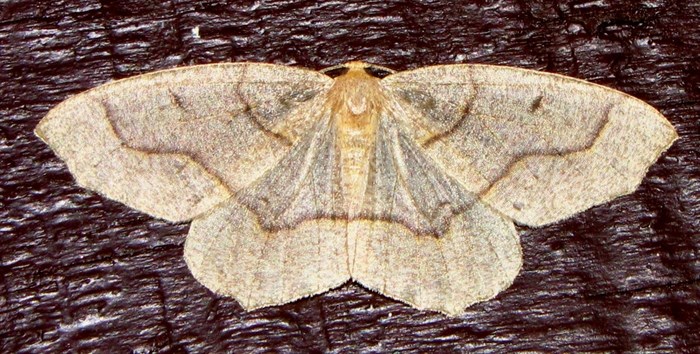
Image Credit: Wikipedia Commons
September 11, 2020 - 1:05 PM
If you've noticed a sudden proliferation of large moths this year, just wait — there will be a whole lot more of them next year.
They are western hemlock loopers and as expected, their numbers are swelling as part of a natural population cycle which means next year the moth numbers are expected to spike in the Thompson, Okanagan and Shuswap areas, as well as anywhere else western hemlock trees call home.
The moths typically get periodic population explosions roughly every 10 years and they can destructive in coastal and interior forests. Larva hatch and munch on hemlock and Douglas fir in the summer months before becoming moths in September and October, according to Natural Resources Canada.
Their numbers have been growing across the province but the actual outbreak in the Interior is expected next year, said Lorraine Maclauchlan, forest entomologist with the Ministry of Forests, Lands, Natural Resource Operations and Rural Development.
“We expect to see defoliation next year and the prelude is all the moths we’re seeing now,” she said.
READ MORE: 5 nasty bugs in the B.C. Interior you might want to stay on top of
Sightings of moths start as few and far between, but over a few years' time, “you get this huge population explosion,” she said. Both 2018 and 2019 showed a population increase in the moths so next year is expected to be the big outbreak.
"We have a large populations of the... moths right now in the fir all around the Kamloops area, the North Shuswap, through the Okanagan,” she said. “I was out at a lot of sites earlier this week. They’re quite prevalent and they’re in my yard."
The looper has a wingspan of about an inch, has a feathery antenna and a zig-zag line on its wing, she said.
The species is native to B.C. and poses no threat to humans. Outbreaks usually occur in old, mature hemlock stands, but occasionally every 20 years there will be outbreaks in lower elevations.
The caterpillars can cause severe damage to the trees. In the past, old mature hemlock near Coldwater and the Shuswap has been decimated, she said.
There’s a patch currently to the south of Kamloops on the west of the Coquihalla highway with a patch of brown trees which was the start of the defoliation this summer, she said.
“Next summer there will be lot more larva and we’ll see a more extensive deforestation in the fir and certainly hemlock,” she said.
The ministry might conduct controlled programs in the Douglas fir, but it will be targeted to high priority areas on Crown land, she said, but it depends on the number of moths.
“As people have noticed the moths, we have just started our survey, so it’s in the works,” she said.
To contact a reporter for this story, email Carli Berry or call 250-864-7494 or email the editor. You can also submit photos, videos or news tips to the newsroom and be entered to win a monthly prize draw.
We welcome your comments and opinions on our stories but play nice. We won't censor or delete comments unless they contain off-topic statements or links, unnecessary vulgarity, false facts, spam or obviously fake profiles. If you have any concerns about what you see in comments, email the editor in the link above.
News from © iNFOnews, 2020